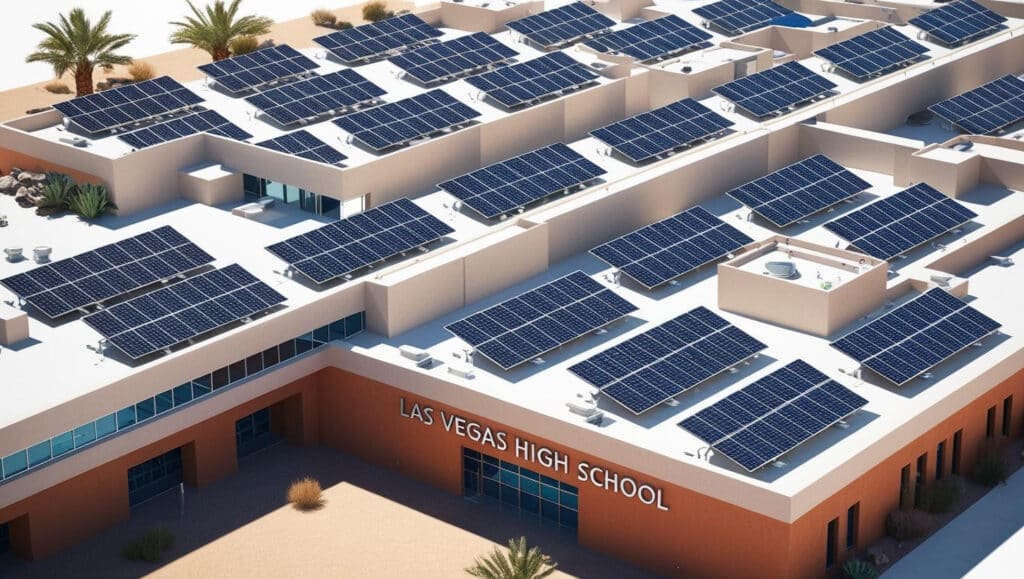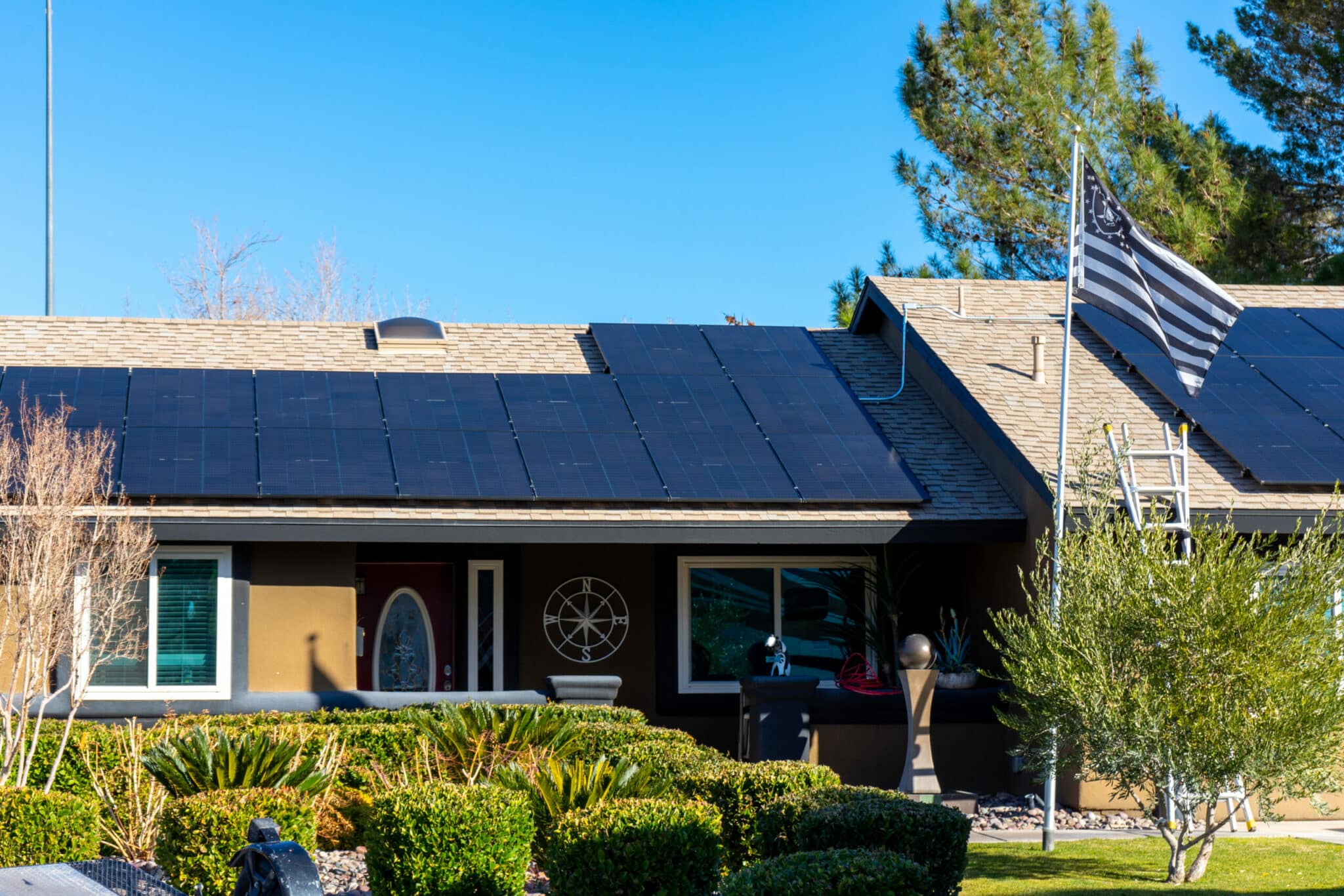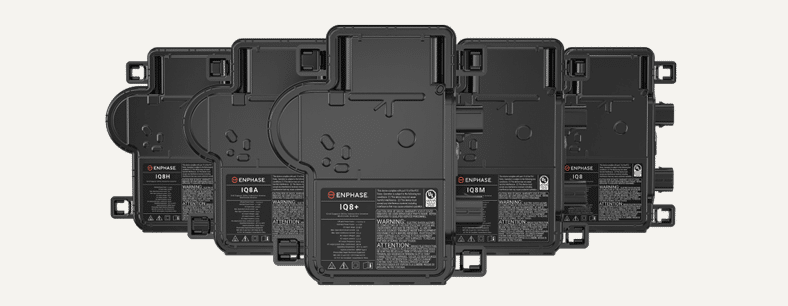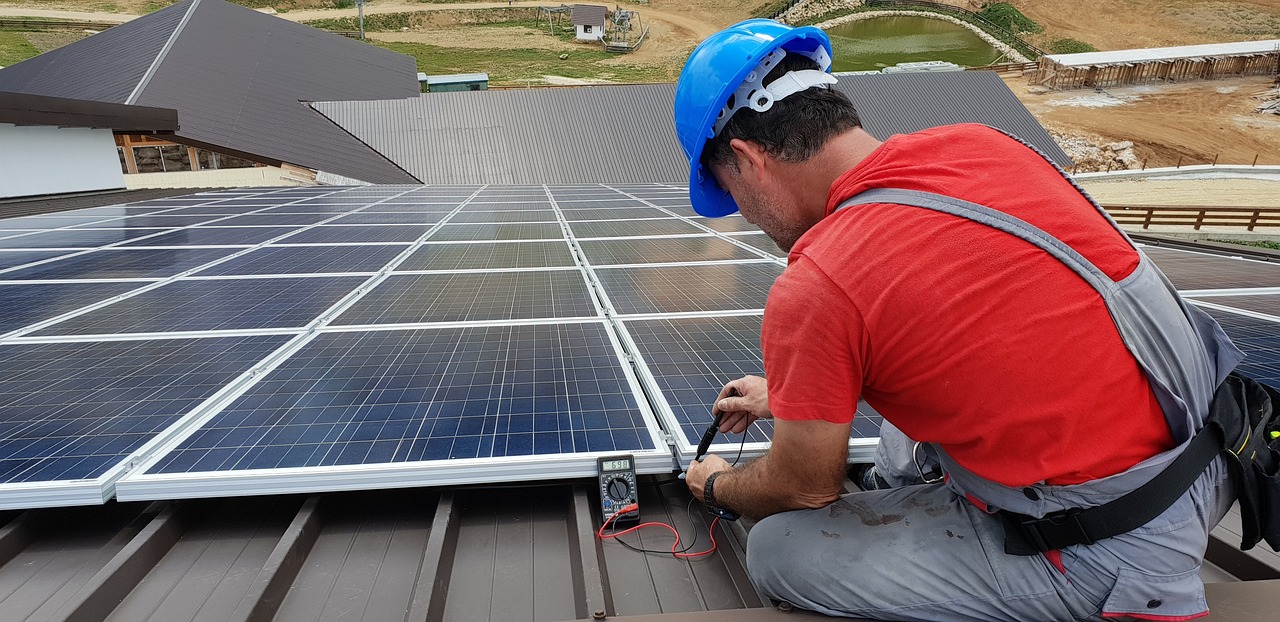Key Takeaways
- Significant Savings: Schools can save millions in energy costs over the lifespan of solar panels, redirecting funds to vital educational initiatives.
- Sustainability Leadership: Solar adoption reduces carbon footprints and positions schools as role models in environmental responsibility.
- Educational Opportunities: Solar systems provide hands-on STEAM learning experiences, inspiring students to explore renewable energy solutions.
Solar energy is no longer just a trend; it’s a necessity. For schools, adopting solar energy provides the dual benefit of achieving significant cost savings while supporting environmental sustainability. With rising electricity costs and an urgency to combat climate change, installing solar panels is an investment in your school’s economic and environmental future.
This blog dives into the top reasons why educational institutions should adopt solar now, exploring the wide-ranging benefits, from financial savings and educational opportunities to sustainability initiatives.
Benefits of Solar Energy for Schools

Schools across the U.S. are seeing the advantages of making the switch to solar energy. Nearly 5,500 schools have already adopted solar power, reaping economic, educational, and environmental rewards along the way.
Solar power is a game-changer for educational institutions, offering immediate savings and long-term solutions to pressing financial and environmental challenges. Let’s explore these benefits in more detail.
Reduced Utility Bills
Solar energy offers substantial savings for schools by cutting down electricity expenses. Instead of allocating excessive budgets to rising utility costs, schools can funnel those funds into programs that matter most—like educational tools, teacher salaries, and student programs.
The savings can be redirected toward extracurricular activities, updated classroom technology, and even campus renovations, ensuring students have the best resources for success.
Education for the Next Generation
Solar energy systems can become an educational tool. With solar panels on campus, students can gain hands-on learning experiences in STEAM (Science, Technology, Engineering, Arts, and Math) programs.
By integrating solar data into lessons, schools can inspire the next generation of environmentally conscious leaders and innovators. This real-world application of renewable energy teaches students the importance of sustainability while equipping them with the skills to navigate a green economy.
A Step Towards Sustainability
Solar panels allow schools to reduce their carbon footprint, helping to combat climate change. By shifting to renewable energy, institutions demonstrate leadership and a commitment to sustainable practices that resonate with their students, parents, and communities.
This shift not only aligns with global climate goals but also instills pride in the entire school community, creating a culture of environmental stewardship.
Flexibility to Fit School Needs
No two schools are the same, and neither are their energy needs. Solar systems can be tailored to meet the unique demands of a school campus. From rooftop installations to ground-mounted systems, schools have options to maximize their energy production and savings.
Harnessing Renewable Energy with Solar Power
Switching to renewable energy like solar doesn’t just impact your bottom line; it helps schools achieve energy independence while protecting the environment. The move to clean energy represents a major step forward for any institution looking to future-proof against rising costs and promote sustainability.
Cleaner and Cheaper Energy
Solar energy is notably cheaper than fossil fuel-based electricity. Schools can reduce their monthly electricity expenses by as much as 80%, freeing up funds for other pressing needs. These savings create opportunities to invest in more teachers, modern technology, and expanded extracurricular programs.
Energy Independence
Solar power enables schools to rely less on external power grids. By installing panels on unused rooftops or ground areas, schools generate their own energy, ensuring consistent power and stability even during price surges in fossil fuels. Energy independence also ensures reliability during outages, keeping school operations running smoothly.
Future-Proofing Against Rising Costs
Electricity prices are only expected to climb, but solar energy offers long-term savings. With panels lasting over 25 years, schools can protect themselves from fluctuating electricity rates and stabilize their budgets.
Financial Savings with Solar Panels
If you’re a school administrator or facility manager, you know how much rising utility costs can impact your budget. Solar energy offers relief. Large schools with higher electricity usage will quickly notice the financial benefits after installing solar panels.
Long-Term Cost Stability
Solar reduces and stabilizes energy costs over time. This financial predictability helps school districts plan better and use their budgets for impactful projects—rather than unpredictable utility bills.
Affordable Solutions
Solar power systems are more accessible than ever, with costs decreasing significantly over the past decade. This makes solar installations financially feasible for small institutions, large districts, and even nonprofits.
Incentives and Subsidies
Thanks to government grants and incentives like those in the Inflation Reduction Act, schools can take advantage of subsidies that drastically reduce the overall cost of installation. Options like Power Purchase Agreements (PPAs) even enable schools to lease systems without any upfront cost. These incentives make transitioning to solar not only feasible but also highly beneficial for tight school budgets.
Solar Panel Installation for Schools
While installing solar panels can seem daunting, a structured approach simplifies the process. Schools have several options to explore when it comes to installation and financing. By working with trusted solar providers, the transition becomes smooth and efficient.
Onsite vs. Offsite Systems
Schools must assess whether they’ll opt for onsite systems (rooftop or open-ground installations) or connect to offsite installations through community solar farms. Choosing the right system ensures your energy needs are met efficiently.
Financing Options
Schools can either purchase systems outright or lease them through programs like PPAs. PPAs allow schools to benefit from solar energy without initial capital investments, making it a budget-friendly solution.
Tax Breaks and Equipment Decisions
While educational institutions may not traditionally qualify for tax incentives, new laws like direct pay options under the Inflation Reduction Act create financial opportunities for schools to adopt solar without incurring additional debt.
Overcoming Common Barriers to Solar Adoption
One of the most significant barriers in transitioning to solar has traditionally been cost. However, that’s changing.
Richland One’s Success Story
Take Richland County School District One as an example. When the district shifted to solar energy, they managed to offset energy consumption across 15 campuses, all while modernizing their infrastructure and bringing costs down.
More Accessible Than Ever
Thanks to improved technology and federal incentives, the upfront costs of solar are now manageable for most schools. Programs like the Solar Energy Industries Association (SEIA) now make it easier for schools to access resources, perform research, and develop partnerships with installation providers.
Educational Benefits of Solar Energy

For schools, solar energy doesn’t just provide power—it provides real-world learning opportunities. Incorporating renewable energy into the educational framework inspires students and equips them with knowledge about sustainable practices.
Integrating Solar into STEAM Programs
Solar systems create interactive learning opportunities in science, engineering, sustainability, and mathematics. Students can analyze solar panel data, explore how sunlight is converted into energy, and understand practical applications of renewable resources.
Promoting Student Engagement
Students can play an active role in their school’s sustainability projects. From organizing school-wide energy-saving initiatives to promoting green energy awareness, they become active participants in driving change at the grassroots level.
These activities encourage creativity, teamwork, and leadership while emphasizing the importance of environmental responsibility.
Leading the Way in Solar Energy
Thousands of schools across the U.S. have already adopted solar energy as a key component of their initiatives. Whether it’s K-12 institutions or higher education campuses, these organizations are saving millions of dollars while positively impacting their communities.
A Ripple Effect
These solar-powered schools are setting an example. Schools with solar systems serve as a model for educational institutions considering clean energy, showcasing tangible benefits such as lower costs, academic integration, and a reduced environmental impact.
Significant Savings
Schools that adopt solar now stand to save millions over time. For instance, it’s estimated that campuses can save $1 million or more over 30 years with solar panels. These savings enable institution leaders to reinvest in the most critical parts of their operations.
Take Action for Sustainable Savings
Switching to solar energy represents a forward-thinking strategy for schools to save money, educate students, and combat climate change.
If you’re ready to take your institution into a more sustainable and cost-efficient future, contact Sun Source Energy—the experts in designing tailor-made solar solutions for schools. Our team will provide a free consultation to discuss your unique energy needs and options for adopting solar.
Take the first step today—schedule a consultation and see how solar can transform your school.






